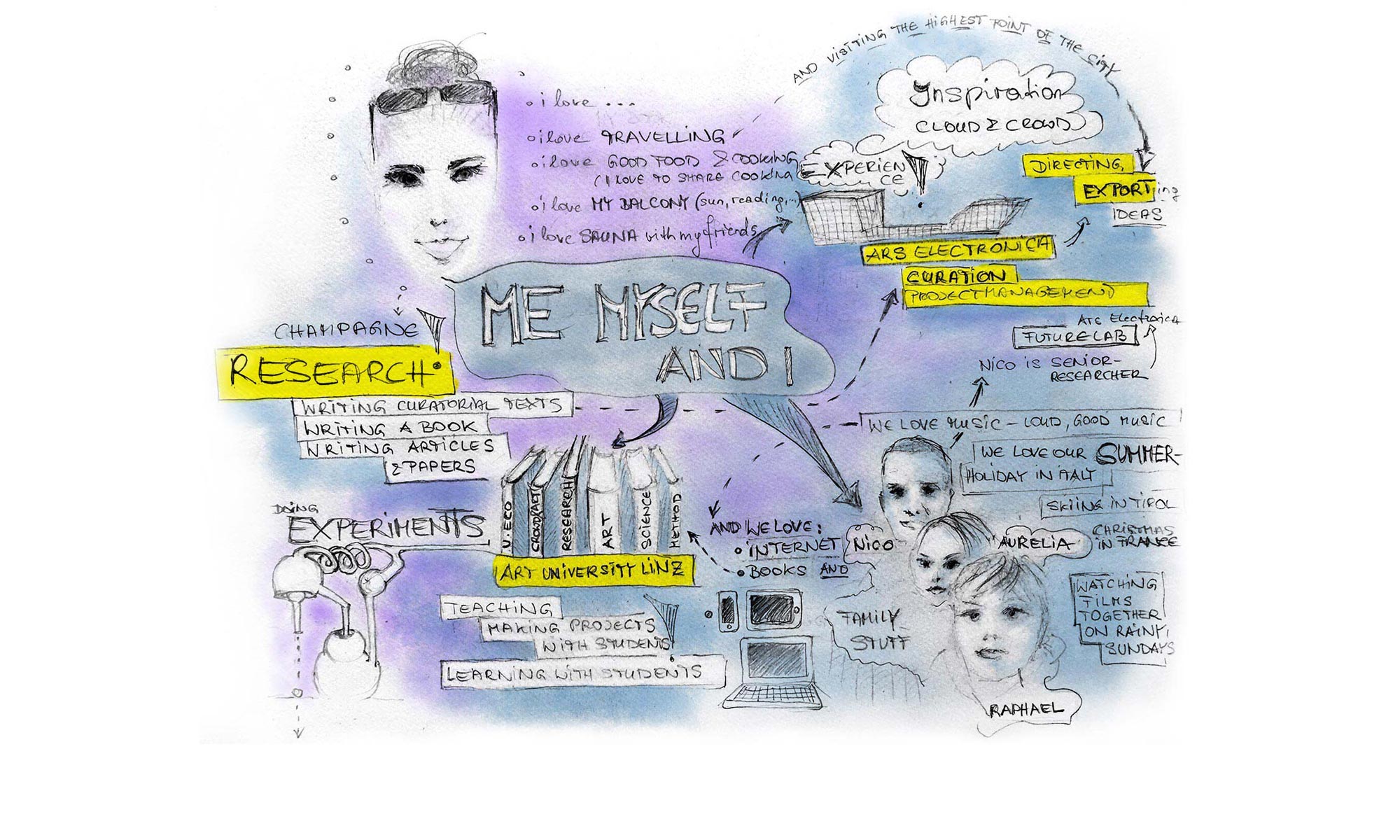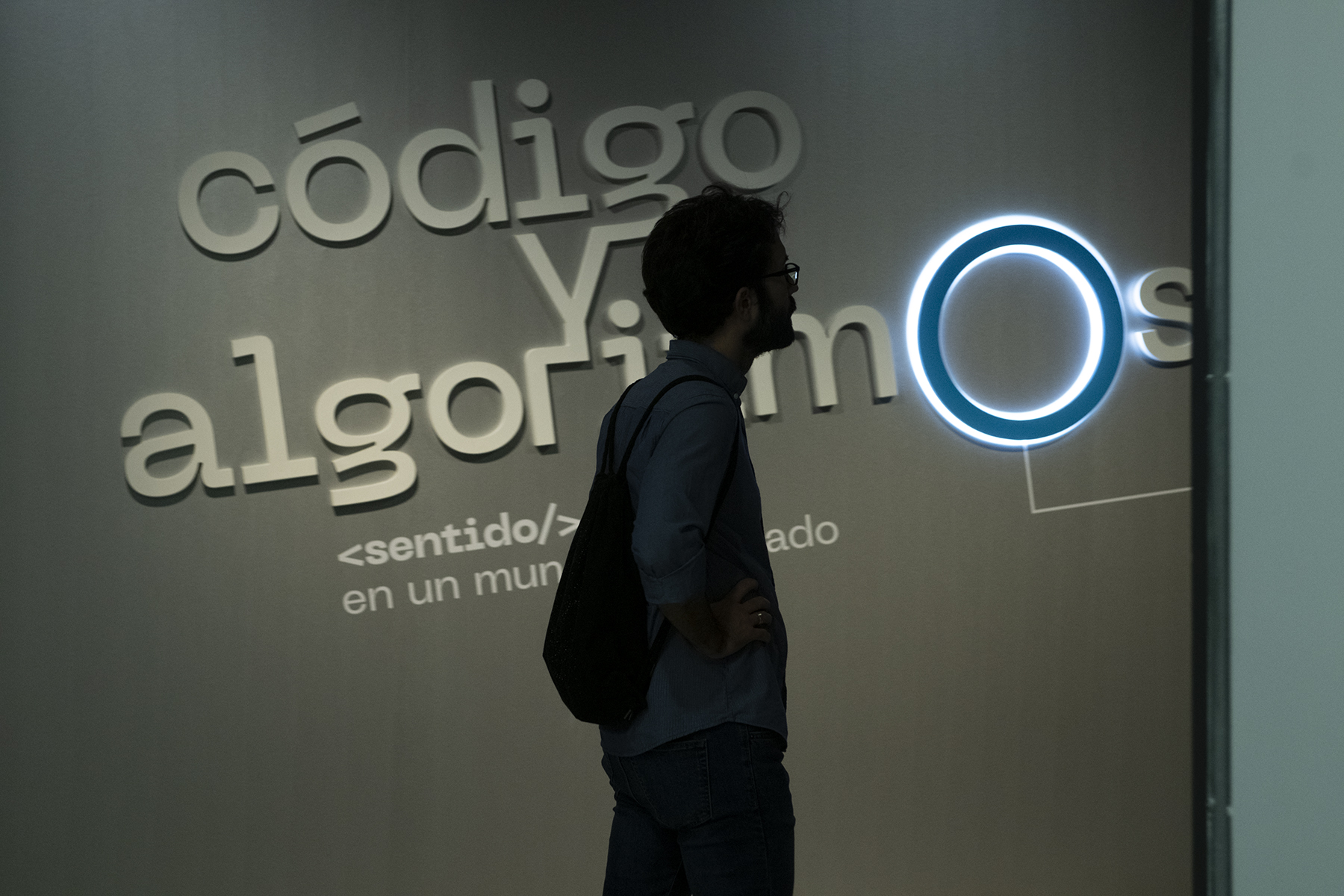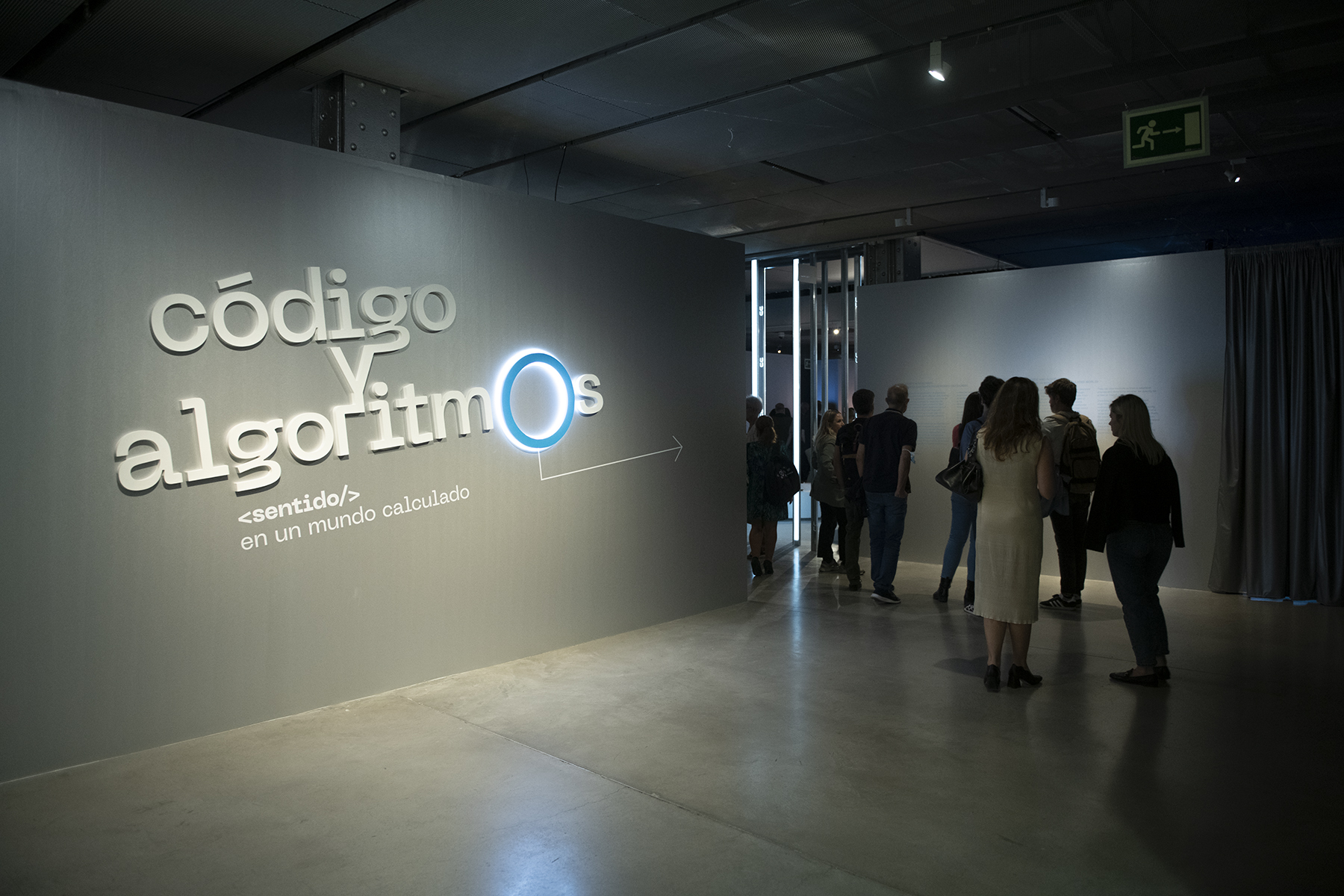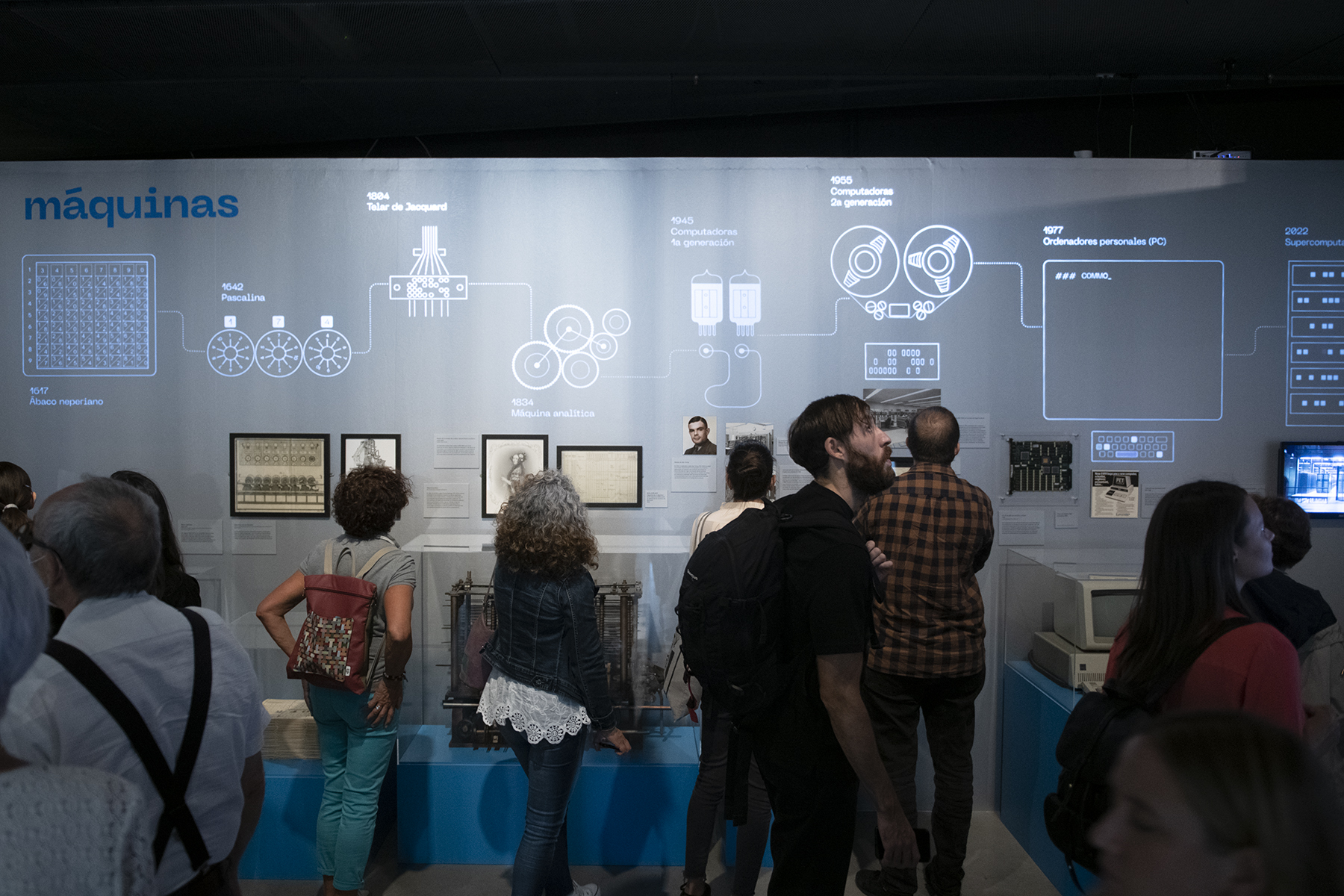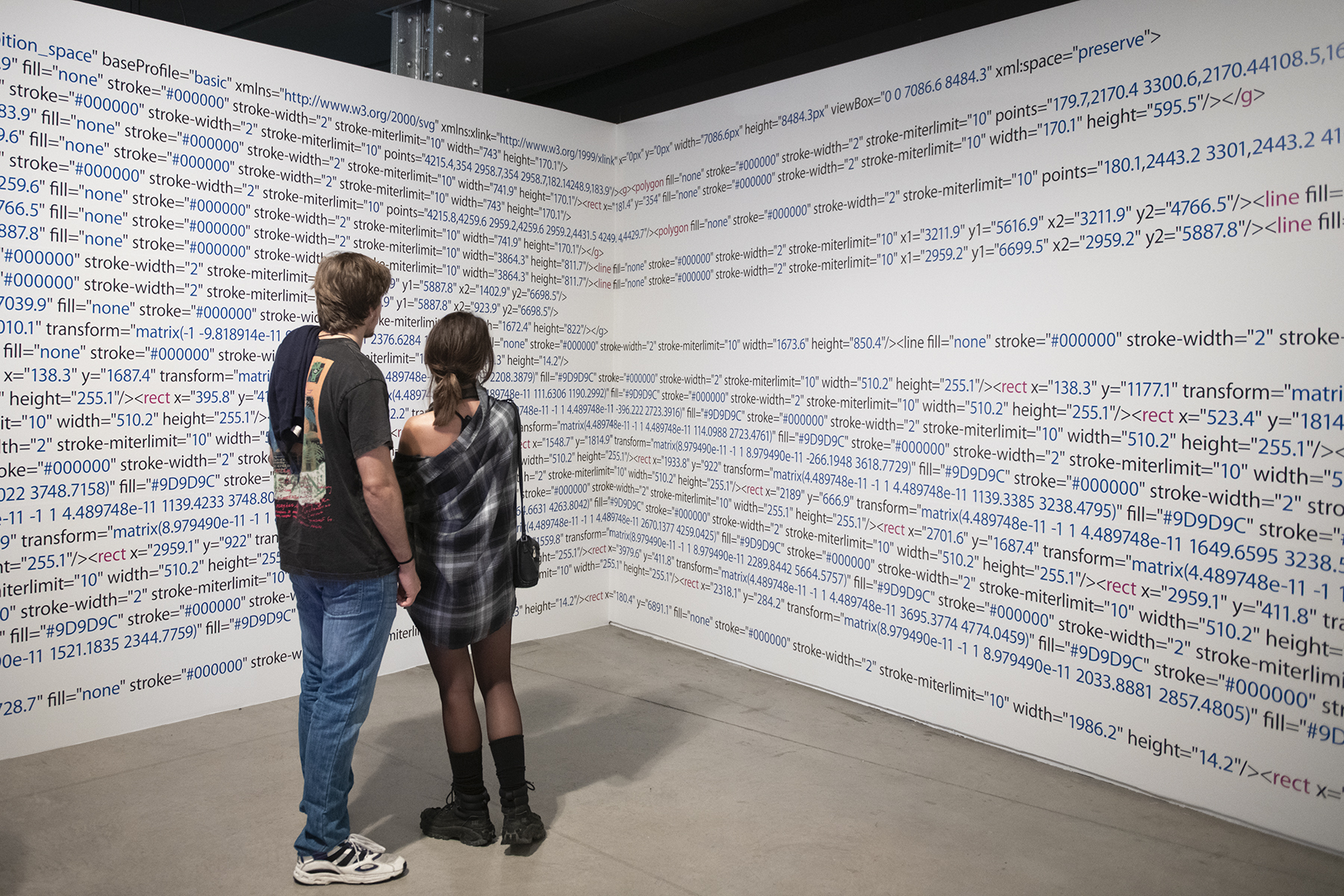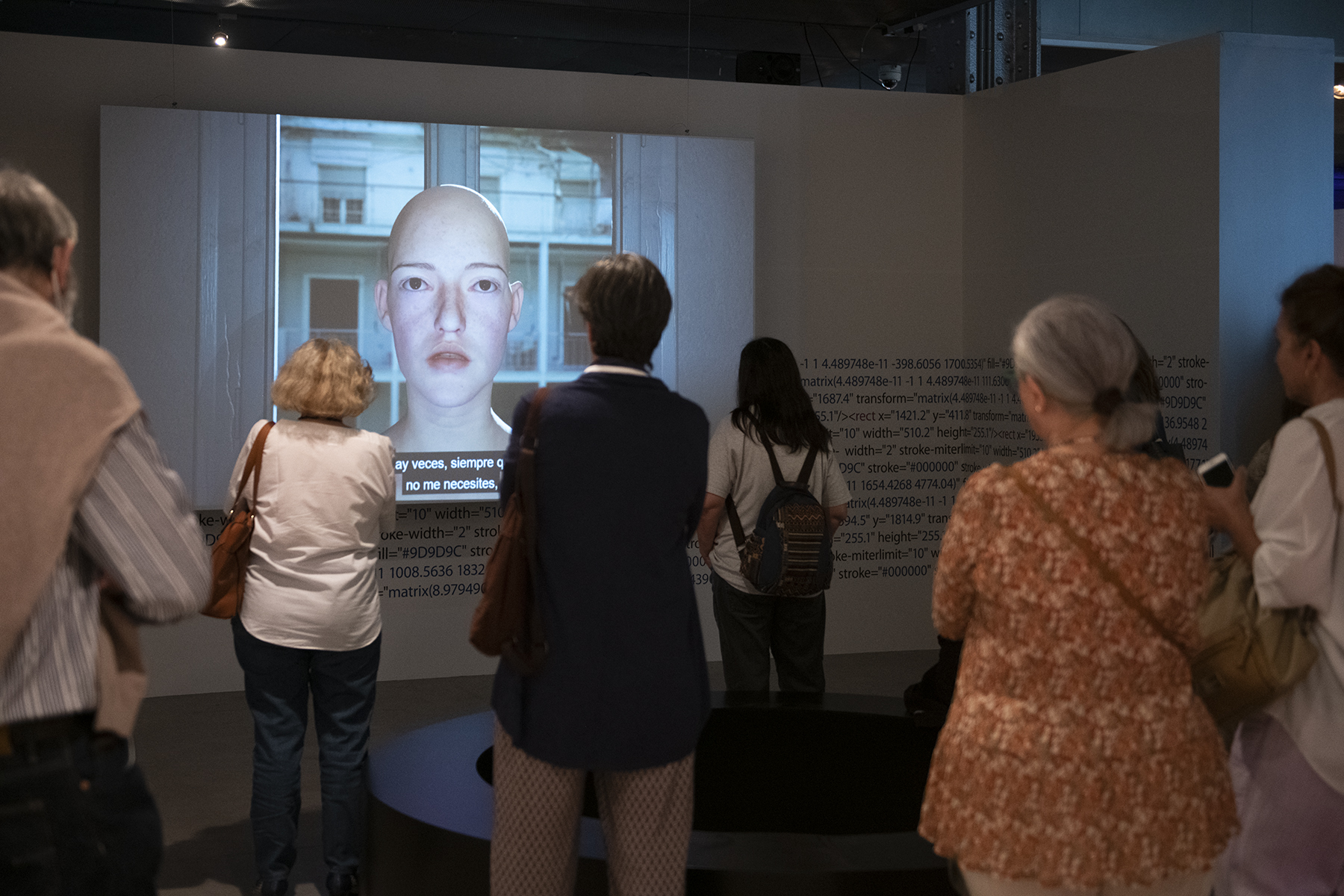CODE & ALGORITHM – wisdom in a calculated world
(2022) exhibition curation / Telefonica Foundation Madrid
The following artists are participating:
Karin Sander, Kyriaki Goni, Clara Boj and Diego Díaz, Mushon Zer-Aviv, Matthias Pitscher and Giacomo Piazzi, Iosune Sarasate, Trevor Paglen, Kairus Art+Research, Shinseungback Kimyonghun, Manu Luksch, Danja Vasiliev, Egor Kraft, Grow Your Own Cloud (GYOC).
In addition, I would also like to thank the following persons for sharing their thoughts, knowledge and incredibly appreciative criticism: Maria Barti, Gustavo Valera, Marta Peirano, Gemma Galdón-Clavell and Ricardo Peña as well as Alejandro Sanchez Menendez, Marta Banach Gorina and Rocio Almada.
In mathematical terms, a code is a mapping of a finite set of characters of an alphabet into a corresponding sequence of signals. This is how Wolfgang Coy, professor of computer science at Humboldt University in Berlin, defined code in 1992. This was exactly one year after the birth of the World Wide Web and after more and more people had turned to the new digital world. At a time when we still understood the world of the Internet as a parallel world that functioned in code as a digital mirror or shadow of our physical world. Algorithms, to be understood as an instruction, recipe, or formula that proposes a solution according to certain rules and procedures, calculate this world and provide a kind of guide to its design. Twenty years later, the famous literary scholar and media theorist Friedrich Kittler is already writing that technology today can translate codes into realities and thus encodes our world. And now, thirty years after the birth of the Internet, we look back and try to understand how our world has changed: Networked machines, whether in our hands, wrists, or pockets, … communicate with each other and compute a world for us. Today, we understand even better that our digital reality is more than just a twin, mirror or shadow of the physical one. It has a life of its own that directly affects our physical world and changes it in return. So when codes as a kind of language system intertwine with algorithms as calculating systems, coming together in small extremely powerful machines that are networked across the planet and autonomously compute a world for us, we have to ask: What is wisdom in a calculated world?
The exhibition is divided into five categories. First, we try to draw a fundamentally technical and historical understanding of code & algorithms (The Nature of Code and Algorithm), second, we talk about the systematics behind algorithmic processes (Classifying and Pedicting), third, which give rise to new forms of work (Humans and Algorithms: who is working?), and fourth, we see intelligent machines for what they are: a computer that acts according to instructions without its own consciousness and body (A world seen through machines). Finally, we venture an outlook (A glimps into the future) and try to look for ways to think about technology beyond the reality we are in.
The exhibition also features a series of informative audiovisual contributions, with the participation of Marta Peirano and Gemma Galdón-Clavell, as well as Sergio Oslé, CEO of Telefónica España and Coral Calero, PhD in Computer Engineering and professor of Computer Languages and Systems at the School of Computer Science of the University of Castilla-La Mancha.
Into the world of Code & Algorithm
„Technology today converts the code into realities, thus encodes the world.“
Friedrich Kittler
„While the word algorithm may be unfamiliar to you, its meaning is not. It´s just a precise way of explaining how to do something. It is commonly used within the context of computer instructions. While most people wouldn´t refer to a pattern for knitting a scarf as an algorithm, it´s the same idea.“
Casey Reas, Chandler McWilliams
The Nature of Code and Algorithm
We take the representation of our world by codes and algorithms for granted. Hence, we call it our digital reality, in which we build spaces, live, love, work, in absolute simultaneity of space and time. We are overwhelmed by the abstract yet world-describing power of codes and algorithms, and have to admit that most of us do not understand this language, nor do we have insight into the computational processes that lie behind the interfaces and yet before our eyes. Codes and algorithms unite in the machines of this world, which are built by humans and placed on the global network. Through this networked situation, algorithms are able to communicate and act automatically, they scan the internet and react to it, calculate a world for us.
This creative power, which lies in this abstract transmission and displacement, is particularly visible in the works of the two artists Karin Sander and Kyriaki Goni. However, if one artist presents the world-creating power of code and algorithms, the other shows the challenges that an algorithmically defined life brings with it.
Karin Sander (DE) // XML-SVG Code / Source Code (2008-2020)
In codes lies the infinite possibility of shaping a world, of designing spaces. Architects in particular benefit from this possibility of transmission, which is performed with incredible speed and precision by ever-improving computers. Karin Sanders has digitally reconstructed the exhibition space and makes its actual source code visible. The inner architecture, the volume of the space, is spelled out as XML/SVG code on the walls. While the series of signs appear to the viewer as coloured patterns, this legible, if indecipherable, language is a tangible reference to a spatial drawing that is simultaneously a representation of the space.
Kyriaki Goni (GR) // Not allowed for algorithmic audiences
A large part of the online audience today consists mainly of algorithms that follow the world online, acting in an automated way and even pretending to be human in nature. Voice assistants speak to us, but also listen in when we are not speaking to them. In Kyriaki Goni’s work, an algorithm takes shape as an intelligent personal assistant, borrows the shape of an avatar and tells us its story, about itself, its abilities, its ancestors, its anatomy and origins, and about the voice and its meaning. At the end, it even gives us tips on how we can manage not to be heard or spied on.
Classifying and Pedicting
“Bias is not a bug of AI”
Mushon Zer-Aviv
“The entire way classification is conceived of in machine learning systems is always going to be discriminatory. That is a feature of the system, and not a bug”.
Trevor Paglen
“Prediction is very difficult, especially if it´s about the future.”
Variously attributed (see Manu Luksch)
Networked machines with enormous computing capacities and data storage capabilities are having an impact on our algorithmic culture: they scan the web and enable us to constantly collect, analyse, categorise, evaluate and share information. Never before have we been able to feed so much information about ourselves and others onto servers and into the digital world. The quantification of our world thus creates not only new realities, but also unintended bias that run the risk of manifesting into systemic distortions. Uncovering these implicit strategies of the digital makes it all the more important to think about the „HOW?“: how is data collected, how is it analysed, how is it categorised and according to what ideas is it evaluated?
With the development of intelligent software and the so-called AI, the issue of bias has become visible and the calculated prediction of a future depends on finding the vulnerabilities from the past.
Mushon Zer Aviv // Normalizi.ng
The question of what is considered „normal“ has occupied humanity for millennia and is in constant negotiation between people. Today, machines take over these decisions and the possibility of discussion is minimised while we constantly record, classify, analyse and normalise ourselves and each other online. Normalizi.ng aims to identify and analyse the image of social normality and seeks to understand how we humans decide. After taking a picture of your face, the machine analyses your decisions, correlates them with all the data it knows and adds your face to its algorithmic map of normality.
Clara Boj and Diego Díaz // Machined Biography
Who am I in the year 2050? Clara Boj and Diego Díaz created a future-looking biography of themselves via collecting activities of the artists during one year. In 2017 they hacked their mobile phones with spyware software that captured information, such as locations, digital conversations, photos, videos, etc. The biography was created with the help of machine learning and was printed in the form of 365 books (one for each day of the year with a total of more than 48 million records) as well as a 24-hour film history.
Mathias Pitscher and Giacomo Piazzi // The Chiromancer”
The Chiromancer is a machine palm reader and explores how trust, hopes and wishes are projected onto computers by automating this ancient practice of predicting the future. This machine scans the visitor’s hand and it prints predictions about a person’s life, replacing the figure of the psychic with the power of information technology. Like many other devices we use every day, it scans the internet on a certain topic and collects, stores and extrapolates data to give us an answer that we like to interpret and relate to us.
GLOSSARY & NAMES
Algorithm appreciation: people prefer algorithmic to human judgment
Algorithmic Nudging: Companies are increasingly using algorithms to manage and control individuals not by force, but rather by nudging them into desirable behavior — in other words, learning from their personalized data and altering their choices in some subtle way.
Berners-Lee, Tim: English computer scientist best known as the inventor of the World Wide Web.
Cambridge Analytica: came to prominence through the Facebook–Cambridge Analytica data scandal.
Critical race theory: cross-disciplinary examination, to explore how laws, social and political movements, and media shape, and are shaped by, social conceptions of race and ethnicity.
Excavating AI: The Politics of Images in Machine Learning Training Sets, essay by Kate Crawford and Trevor Paglen
Galdón-Clavell, Gemma: external advisor of the exhibition; Spanish technology policy analyst.
Internet access: is the ability of individuals and organizations to connect to the Internet using computer terminals, computers, and other devices.
Kittler, Friedrich (1943 – 2011): was a literary scholar and a media theorist. His works relate to media, technology, and the military. The quote in the beginning was taken from here.
Luksch, Manu: artist of the exhibition; Austrian artist based in London/UK and dealing (beyond others) on the topic of prediction and algorithmic life.
Mundaneum: the world´s knowledge as an archive, created in 1910 by the Belgian lawyers Paul Otlet and Henri La Fontaine, who also invented the Universal Decimal Classification system.
NOYB: European Center for Digital Rights, co-founded by Max Schrems
Peirano, Marta: external advisor of the exhibition; Spanish writer and journalist with a focus on privacy and security on the internet.
Statista: is a German company specializing in market and consumer data; e.g. number of global social network users (2018-2027)
Code
Algorithm
Big Data
Deep Fake
Deep Learning
Deep Mind
Superintelligent AI
Technological Singularity
Digital twin
All artists of the exhibition
Names and inventions from the timeline (Alejandro)
